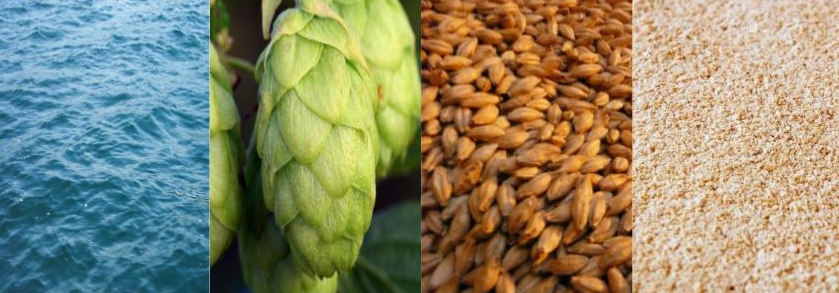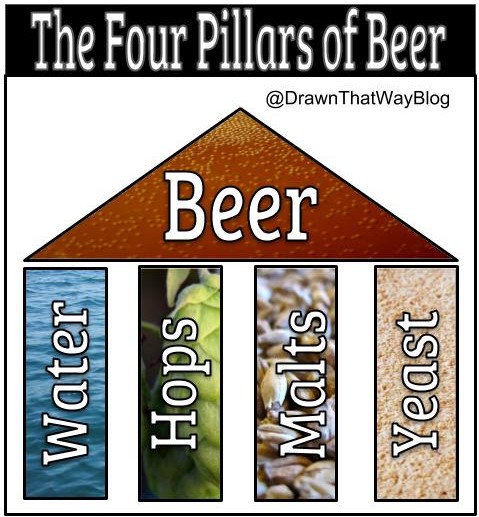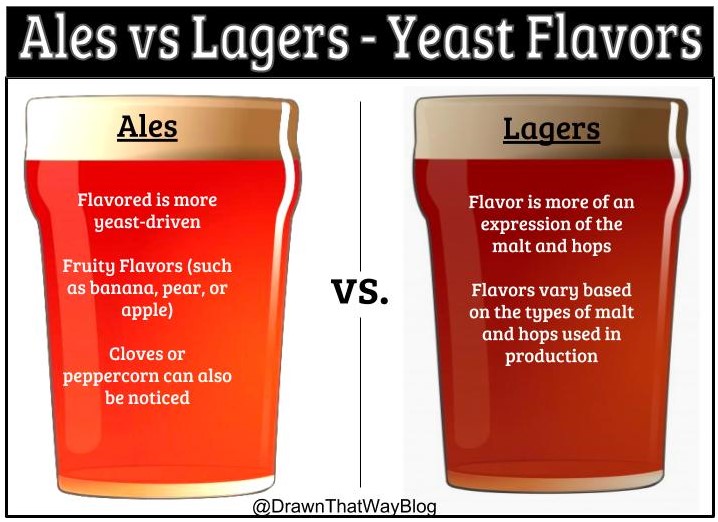
Now even though beer is not a spirit, according to a 2014 analysis by the World Health Organization, 50% of the alcohol consumed in the United States is beer. So why don’t we take a look into the popular drink?
There are 4 main ingredients to beer that have a major impact on the final flavor: water, hops, malts, and yeast.

Pillar 1 – Water
Pure water is a rarity. Depending on the source of the water, it comes into contact with different natural minerals which are absorbed by the water. The types of minerals found in water and their quantities impact the chemistry of the brewing process, ultimately influencing the final outcome.
Pillar 2 – Hops
Hops are cone-shaped flowers that affect not only the flavor of the beer but also strengthens its preservability by warding off bacteria.
- Hop Flavors – Hops impart a bitterness to the beer that can balance out the sweetness imparted by the malts. They can also bestow floral, herbal, spice, pine, and citrus aromas.
- Brewers can use one or multiple types of malts in their recipes to get a specific balance of flavors in their beer.
Pillar 3 – Malts
Generally a shortened term for malted barley; although wheat, rye, oats, sorghum, rice, and corn can all be used for brewing beer. Barley is preferred because it is high in starches and protein, keys to the creation of alcohol.
- Malting Process – “Malted” refers to a process that the barley, or other grain, goes through. The grain is soaked in water, allowing it to start sprouting, then dried out on a kiln. Most grains are lightly toasted but they can also be kilned at a higher heat to create a darker color and more robust flavor.
- Malt Flavors – The flavor the malts impart vary widely based on the level of toasting and the specific grain variety. Some malts impart toasted bread flavors including flour, white bread, and wheat bread. Others are sweeter like caramel, molasses, or toffee. The most robust flavors include coffee or charred wood.
- As with hops, brewers can use one or multiple types of malts in their recipes to get a specific balance of flavors in their beer.
Pillar 4 – Yeast
Yeast is a fungus that transforms sugars into ethanol (the drinkable alcohol). Brewers can manipulate yeast to produce or inhibit certain flavors in the final product.
- Yeast Flavors – Some yeast flavors include banana, green apple, cloves, and butter. Flavors can be seen as expected or undesirable based on the style of beer the brewer is going for. Most beer styles can be categorized as either an ale or a lager (see graphic below).

